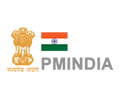The Chicken Road casino slot machine game is a fascinating creation from Pragmatic Play that combines elements of adventure, excitement, and unpredictability. This review will delve into every aspect of the game to provide an in-depth understanding of its mechanics, features, and overall player experience.
Theme and Design
Chicken Road is set https://chicken-roads.pk/ in the Wild West era, featuring cowboys and outlaws navigating a dusty road on horseback. The background scenery shifts between various locations such as deserts, mountains, and forests, while the reels are framed with wooden planks and adorned with tumbleweeds. The game’s atmosphere is reminiscent of classic Western movies, complete with country-style sound effects and an upbeat melody that amplifies tension during winning streaks.
Symbols
The paytable includes 11 symbols divided into two categories: low-paying ones (A, K, Q) and high-paying ones (Ace Cowboy, Sheriff Badge, Horse). Winning combinations range from three or more of the same symbol to specific character combinations. The Ace Cowboy appears most frequently as a wild substitute for any other symbol except scatters.
Payouts
Each winning combination yields different payout amounts based on the symbol value and the number of times it appears in view. While the payouts may seem relatively low, the game’s volatility is higher than average, increasing chances of substantial wins during hot streaks.
Payout Multipliers
Some combinations offer multiplier bonuses ranging from 2 to 10x, depending on the specific scenario:
- Ace Cowboy:
- Three or four instances = x2, x20 respectively
- Five-of-a-kind combination yields x100 and also triggers a random feature where either one of three icons (the Sheriff Badge, the Horse) is randomly picked to be removed from play for several subsequent spins
- The Ace Cowboy with bonus icon on reel five gets 5x multiplier with an additional spin
Wilds
The Wild symbol substitutes any other standard icon in winning combinations but cannot appear as part of a scatter combination.
Other Key Features
Some notable aspects include:
- Scatters: Scattered Sheriff’s Badge symbols trigger free spins and, when landed three to six times on reels two through five (either horizontally or vertically adjacent), award between eight and twenty-five bonus games along with the chance to choose one of four additional wild types.
- Bonus Features:
- The random feature where a chosen symbol is removed from play for several spins, giving players increased chances at winning due to fewer symbols competing on the reels
- Free Spins can be retriggered by getting three or more scatters during this bonus round, adding up to twenty-five additional games.
Free Spins
During free spins, any scatter icon that lands in view remains as part of the bonus and awards a 1x multiplier. After the feature ends, an option is provided for players to replay it at the same bet or adjust stakes before retriggering the round
Overall Experience
Throughout its various features, gameplay balance is maintained with no single moment of intense excitement dominating over all else.
Technical Details
This review will not provide comprehensive details about RTP (Return To Player) values and volatility for each game. It’s worth noting that these factors vary by jurisdiction due to regulatory requirements governing the spread of gambling statistics in different locations.
Gameplay Experience
One notable aspect is that the spin speed seems slower than average, taking around 2 seconds between every click or continuous sequence – a factor potentially leading players toward higher frequency bets as part of optimizing profit.
Mobile Play
A mobile version exists for both iOS and Android devices, offering smooth visuals with easy navigation options tailored specifically to touchscreen interfaces.
Mobile Play Limitations
Some minor differences from the desktop release include:
- A vertical game layout
- The lack of some animations affecting certain graphical elements
- The inability to adjust stakes in real-time
Player Experience and Overall Analysis
Considering various aspects including design, payouts, wilds/scatters features/bonuses free spins RTP/ volatility betting range gameplay mobile play user interface – this slot provides an engaging gaming session with varying probabilities.
Overall Chicken Road offers numerous attractions through a solid blend of familiar Wild West elements combined with several unique mechanics offering room for adaptation via strategic game selection within a wider collection.







